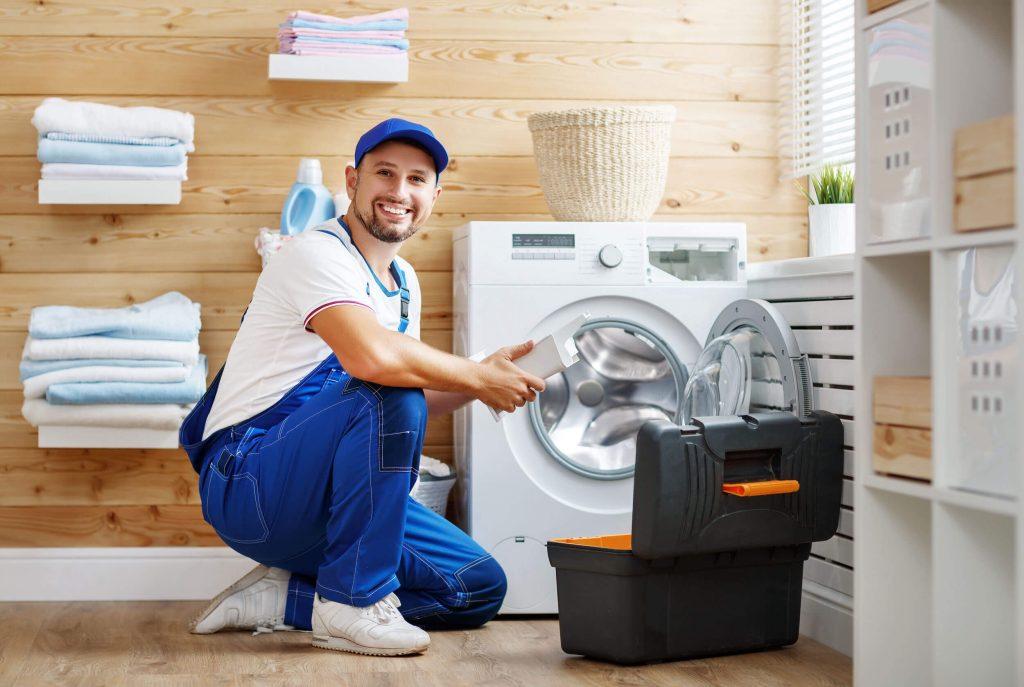
Dryer Repair in Dubai and Sharjah
Dryers have become essential in modern households, making laundry tasks more convenient and time-efficient. However, when your dryer malfunctions, it can cause frustration and disrupt your daily routine. This article will explore common dryer problems and provide practical solutions for dryer repair in Dubai and Sharjah. Whether your dryer is not heating up, spinning, or drying clothes effectively, we’ve covered you with troubleshooting tips and DIY repair suggestions. So let’s dive in and get your dryer up and running again!
Common Dryer Problems
Dryer Not Heating Up
When your dryer fails to produce heat, it can prolong the drying time and dampen your clothes. A broken heating element, thermostat, or thermal fuse might be to blame. It’s essential to identify the root cause to fix the problem effectively.
Dryer Not Spinning
A broken belt, motor issue, or faulty door switch can cause a dryer to refuse to spin. Fixing a non-rotating dryer drum immediately is essential to prevent additional damage and discomfort.
Dryer Not Drying Clothes
If your dryer completes the cycle, but the clothes come out still wet, it can be frustrating. This problem may have several causes, some of which are: a clogged lint filter, a blocked vent, or a malfunctioning moisture sensor. It’s essential to address the problem to ensure your dryer functions optimally.
Troubleshooting Dryer Issues
Check Power Supply
Before diving into complex repairs, ensure your dryer receives adequate power. Ensure the plug is in a working outlet, and inspect the cable for any apparent damage. Additionally, check the circuit breaker or fuse box to ensure no tripped breakers or blown fuses.
Examine Heating Element
A faulty heating element can cause the dryer to stop producing heat. Consult your dryer’s manual to locate the heating element, and use a multimeter to test its continuity. If the heating element is defective, consider replacing it with a new one to restore proper functioning.
Inspect Thermal Fuse
The dryer’s thermal fuse is a failsafe that cuts power if the appliance becomes too hot. Your dryer cannot heat up if the thermal fuse has blown. Inspect it with a multimeter for continuity; if it fails, swap it out with another thermal fuse.
Clean Lint Filter and Vent
A clogged lint filter and vent can restrict airflow, leading to poor drying performance. Regularly clean the lint filter after each use and inspect the flue for any blockages. Use a vacuum or a lint brush to remove accumulated lint and debris to ensure proper ventilation.
DIY Dryer Repair Tips
Replace Heating Element
If your heating element is defective, you can replace it by following these steps:
Take the dryer out of the wall and switch off the gas (if necessary)
Locate the heating element, usually found at the back of the dryer.
Remove the screws or clips securing the heating element housing. Disconnect the wires attached to the heating element
Install the new heating element by connecting the cables in the same configuration.
Secure the housing back in place using screws or clips.
Plug in the dryer and test its functionality by running a drying cycle.
Replace Thermal Fuse
To replace a faulty thermal fuse, follow these steps:
Pull the plug from the dryer and look on the blower housing or the exhaust vent for the thermal fuse.
The thermal fuse’s wires must be disconnected.
Check the fuse’s continuity using a multimeter. If there’s no continuity, it’s likely blown and needs replacement.
Install the new thermal fuse by connecting the wires in the same manner as before.
Reassemble any parts that were removed during the process.
Plug in the dryer and test it to ensure the issue has been resolved.
Clean Ventilation System
Regularly cleaning the ventilation system can improve your dryer’s efficiency. Here’s how to do it:
Disconnect the dryer from the power source.
Take the dryer’s exhaust pipe from the rear of the appliance.
Clean the vent hose using a brush or vacuum cleaner to remove lint and debris.
Use a long brush or vent cleaning kit to clean the vent pipe leading to the exterior of your home.
Ensure that the vent flap on the outside is not obstructed and can open freely.
Reattach the vent hose to the dryer and secure it tightly.
Plug in the dryer and run a drying cycle to check for improved performance.
When to Call a Professional
While some dryer repairs can be done as DIY projects, certain situations call for professional assistance:
Complex Repairs
Complex problems, such as those involving the control panel, the motor, or the wiring, are best left to a skilled expert. Thanks to their extensive training and expertise, they have what it takes to undertake complex repairs successfully.
Warranty Coverage
If your dryer is still under warranty, attempting DIY repairs might void the warranty. Contact the manufacturer or authorized service centre to schedule a repair covered by the warranty.
Safety Concerns
Electrical components and gas connections pose safety hazards. If you need more clarification about handling these aspects or if you’re uncomfortable working with electricity or gas, it’s safer to rely on a professional technician.
Remember, the safety of yourself and your appliance should be a top priority. Feel free to seek professional assistance when needed.
Conclusion
Dealing with a malfunctioning dryer can be a hassle, but with the proper knowledge and troubleshooting steps, many issues can be resolved without professional help. By checking the power supply, examining the heating element and thermal fuse, and keeping the ventilation system clean, you can tackle common dryer problems effectively. However, when facing complex repairs, warranty coverage, or safety concerns, it’s advisable to seek the assistance of a professional technician. By taking appropriate measures and understanding when to DIY and when to call for help, you can keep your dryer running smoothly and ensure the efficiency of your laundry routine.
FAQs
Can I repair my dryer if it’s still under warranty? It’s recommended to check your warranty terms. Attempting DIY repairs might void the warranty, so it’s best to consult the manufacturer or authorized service centre.
Assuming you still need to clean the vent on your dryer?
Clean the lint filter after every use and inspect the flue at least once a year. However, if you notice reduced drying efficiency or longer drying times, cleaning the lint filter and vent more frequently is advisable.
Why is my dryer not heating up?
Several reasons can cause a dryer to stop producing heat, such as a faulty heating element, thermostat, or thermal fuse. It’s essential to troubleshoot the issue to identify the specific cause and take appropriate steps for repair.
Can I replace the heating element myself?
Yes, replacing the heating element is a DIY task that can be done with some essential tools and careful following of instructions. However, it’s best to seek professional assistance if you need more clarification or are uncomfortable with electrical repairs.
How can I prevent future dryer issues?
Regular maintenance is critical to avoiding future dryer problems. Clean the lint filter after each use, inspect the vent for blockages, and avoid overloading the dryer. Additionally, ensure proper ventilation and avoid using the dryer for items that are not dryer-safe.
Does my noisy dryer usually have to do that?
Some noise is expected during the drying cycle, but if you notice loud or unusual sounds like grinding, scraping, or banging, there might be an issue with the dryer’s components. Stopping additional damage requires a competent technician’s inspection.
By following these troubleshooting tips and understanding when to seek professional help, you can address common dryer issues effectively and ensure the longevity and performance of your dryer.




